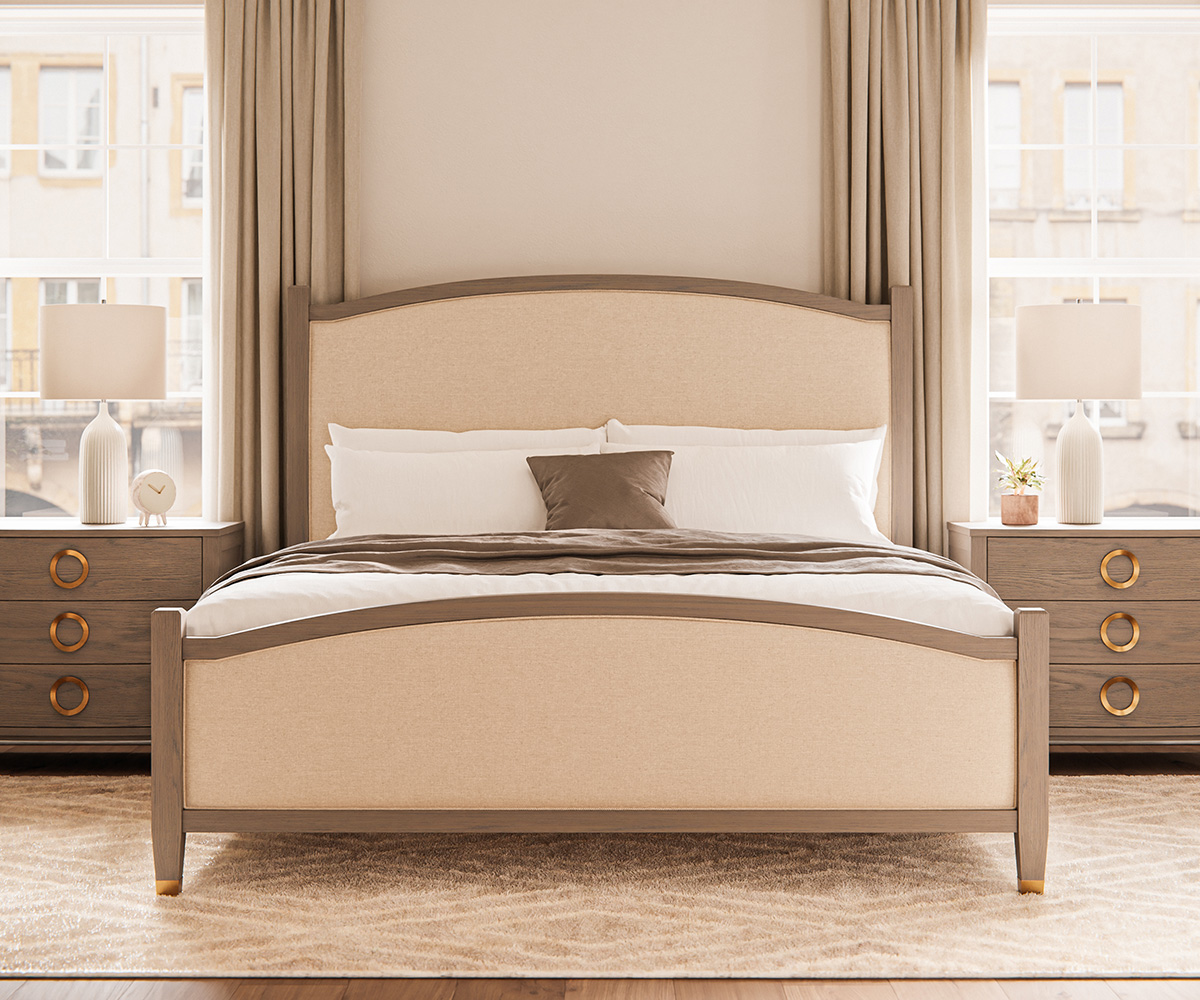
Understanding Amish Furniture Styles
Amish furniture styles reflect a rich tapestry of tradition, craftsmanship, and timeless design. From the graceful curves of Traditional pieces to the raw, natural appeal of Rustic styles, each reflects not only the skill of Amish worker but also their deep respect for the materials they work with. Our hopes are that by helping you to understand these distinctive styles you will be better able to find the best pieces that fit your home. And, as a bonus you may come to appreciate the artistry that is Amish-made furniture.
Traditional Style:
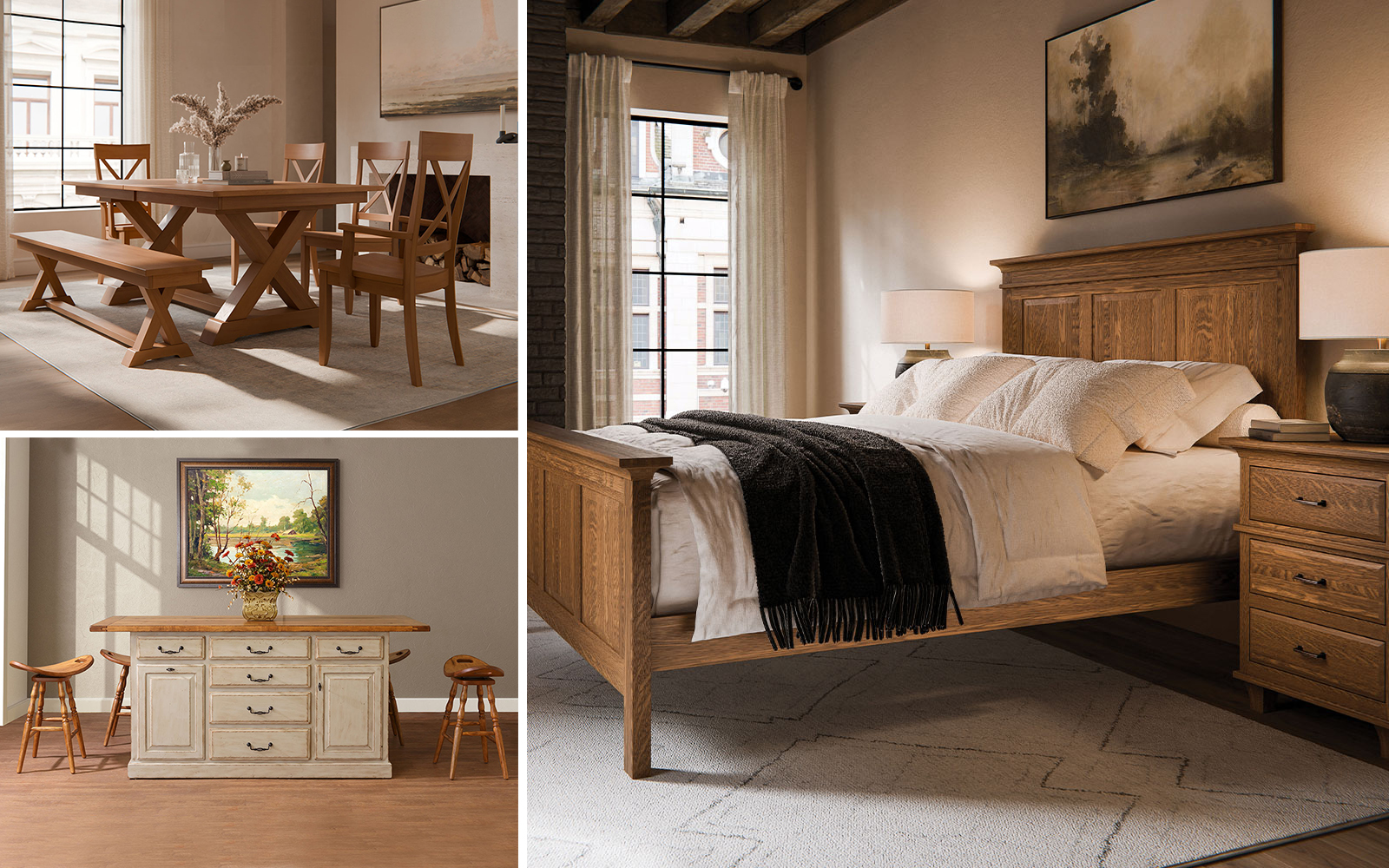
Elegance Rooted in History
- Graceful Ornamentation
- Claw Legs
- Scallop/Shell Designs
Looking to infuse your space with a rich sense of history? Traditional furniture is the way to go. This Amish furniture style pulls together the best of European and American design periods, making it a top pick for antique lovers.
Inspired by the Victorian and Edwardian eras, Traditional furniture is all about that elaborate, formal vibe that once filled the manors and palaces of the elite. Even today, these pieces are found in many homes, often as cherished heirlooms passed down from . The Amish took this style to the next level, showcasing their craftsmanship through intricate carvings and exquisite dark finishes.
While Traditional styles were once the perfect match for grand old homes and pre-1950s townhouses—with their gable fronts, columns, and cozy porches—they’re now making a stylish comeback in modern settings. Traditional furniture features elegant ornamentation, clean lines, and tapered legs. You’ll often spot scalloped or shell designs, bun, ball, or claw-foot legs and arms, all dressed up in luxurious upholstery. Mixing these classic elements into contemporary spaces adds a touch of timeless elegance and character. So why not blend a bit of old-school charm into your modern home? It’s a design remix that truly stands out.
Mission Style:
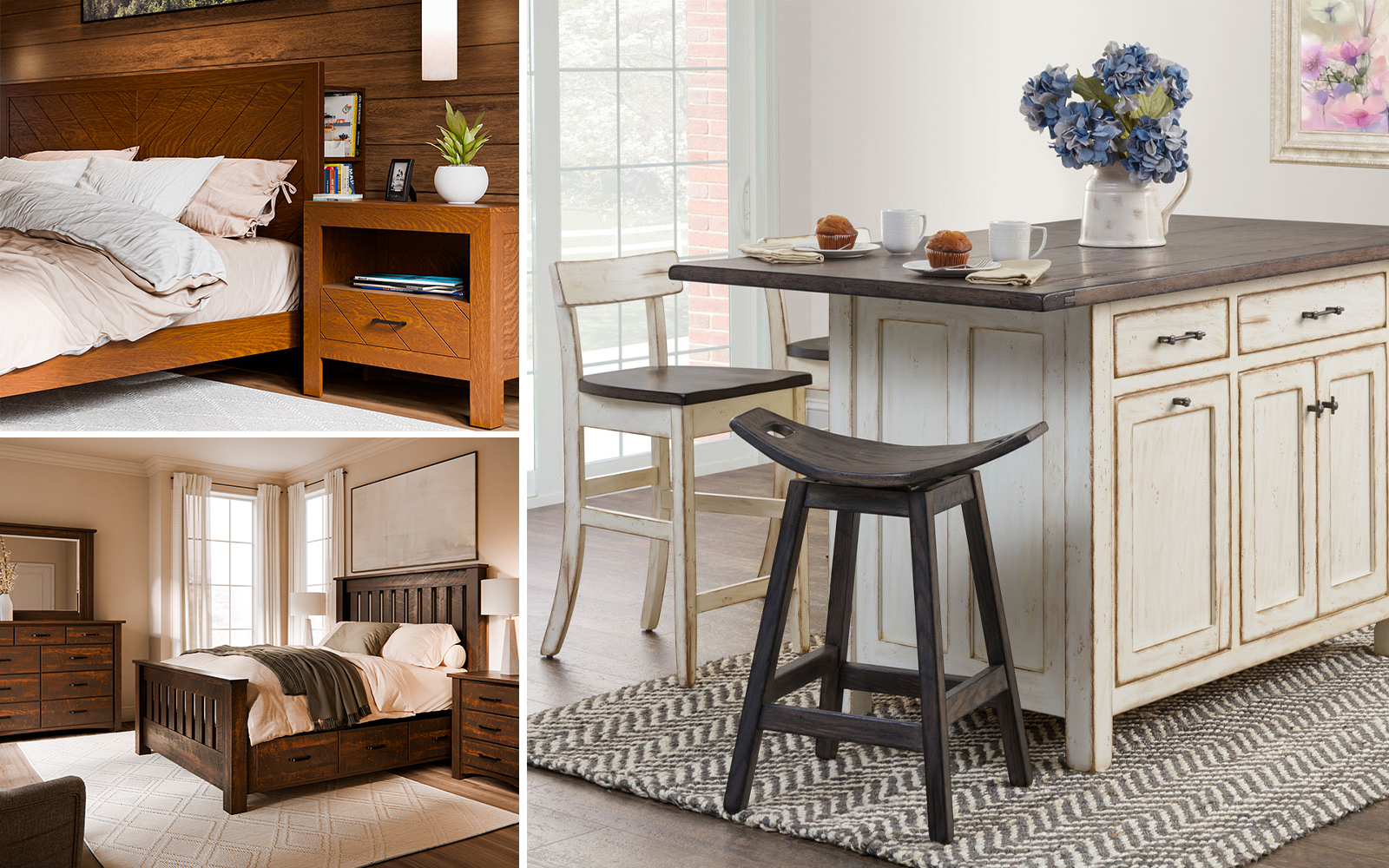
Simplicity & Strength
- Simple Edges and Lines
- 90 Degree Angles
- Exposed Joints
If you’re drawn to furniture that embodies simplicity and durability, Mission-style pieces are worth considering. Originating in America during the late 1800s as a counter to the extravagance of Traditional furniture, Mission style focuses on practicality and straightforward design.
Despite its name, the modern Mission aesthetic has evolved beyond the original furnishings of the Spanish Missions in the American West. Influenced by the Arts & Crafts Movement, this style remains popular today, cherished for its robust craftsmanship and timeless functionality. After a resurgence in the mid-1980s, people began to rediscover its sturdy elegance. The Amish, known for their exceptional woodworking skills, offer extensive collections of Mission furniture that highlight its enduring appeal.
Distinctive features of Mission-style furniture include right angles and unadorned edges without beveling. Mission-style designs feature elongated, straight vertical and horizontal lines, along with parallel slats and exposed joinery. This minimalistic approach emphasizes the natural beauty of the wood grain and makes it a flexible choice for either traditional or modern spaces. If you appreciate a blend of form and function with a touch of historical significance, Mission-style furniture could be the ideal addition to your home.
Shaker Style:
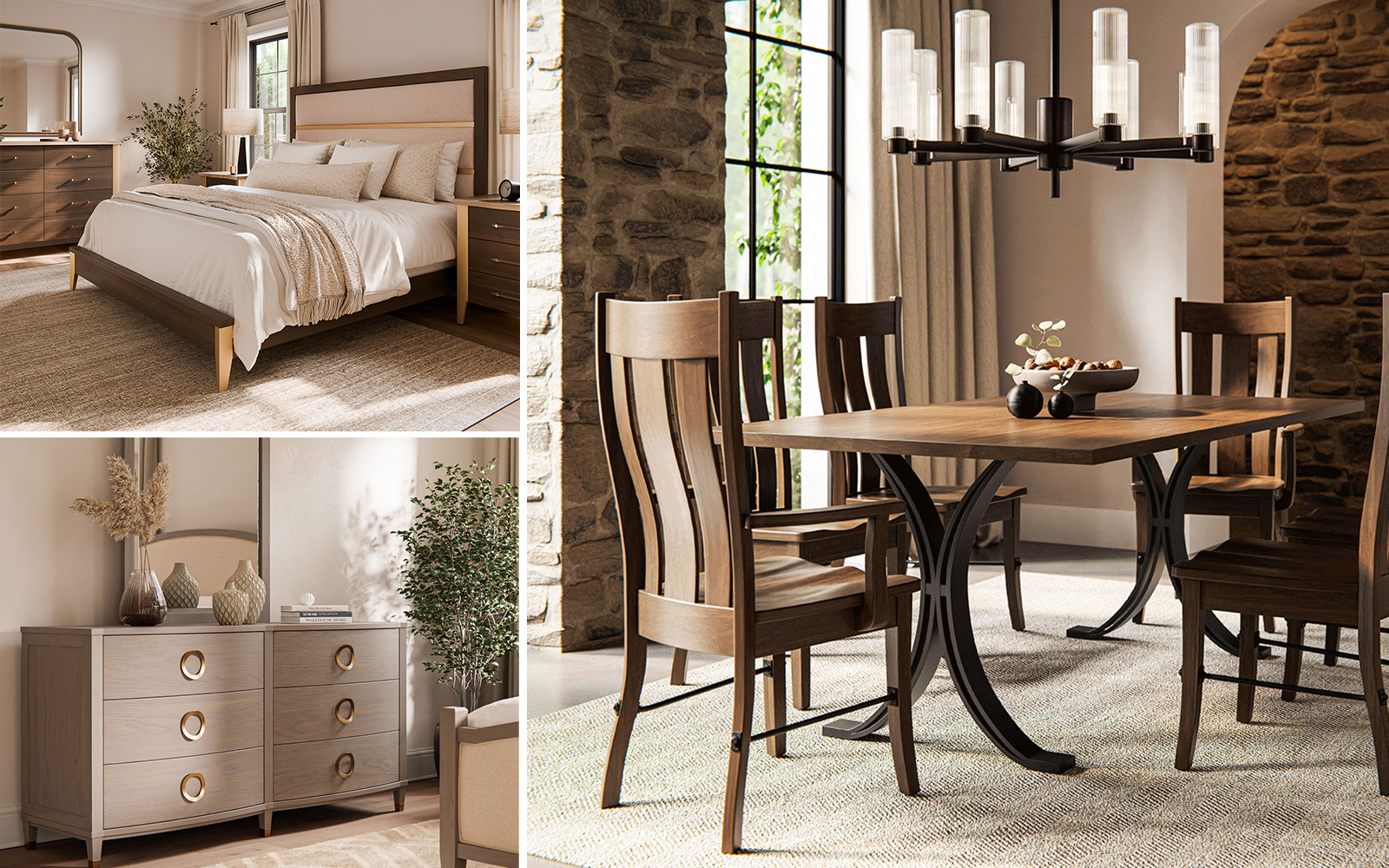
Understated Grace
- Wood Knobs
- Simple with Gentle Curves
- Tapered Legs
If you’re attracted to furniture that combines simplicity with timeless elegance, Shaker-style pieces might be your perfect match. Originating from the “Shaking Quakers,” a small religious group from the early 1800s, the Shakers believed that excess and ornamentation were signs of pride.
This philosophy inspired them to design furniture that was both practical and unadorned, mirroring their convictions and lifestyle. The straightforward design and enduring quality of Shaker furniture have allowed it to stand the test of time. Its seamless fit with Amish values and woodworking skills led to its quick adoption into their craftsmanship.
While Shaker furniture is often mistaken for Mission style due to some overlapping features, it possesses its own unique characteristics. Key elements include wooden knobs, gentle curves at the base of case goods, tapered legs, graduated drawers, and lighter wood stains. This design approach not only brightens up a room but also allows these pieces to blend effortlessly with existing furniture, colors, and decor. Contemporary Shaker styles have started to incorporate trim molding with soft, sweeping curves, adding a modern touch to the classic design.
Modern Style:
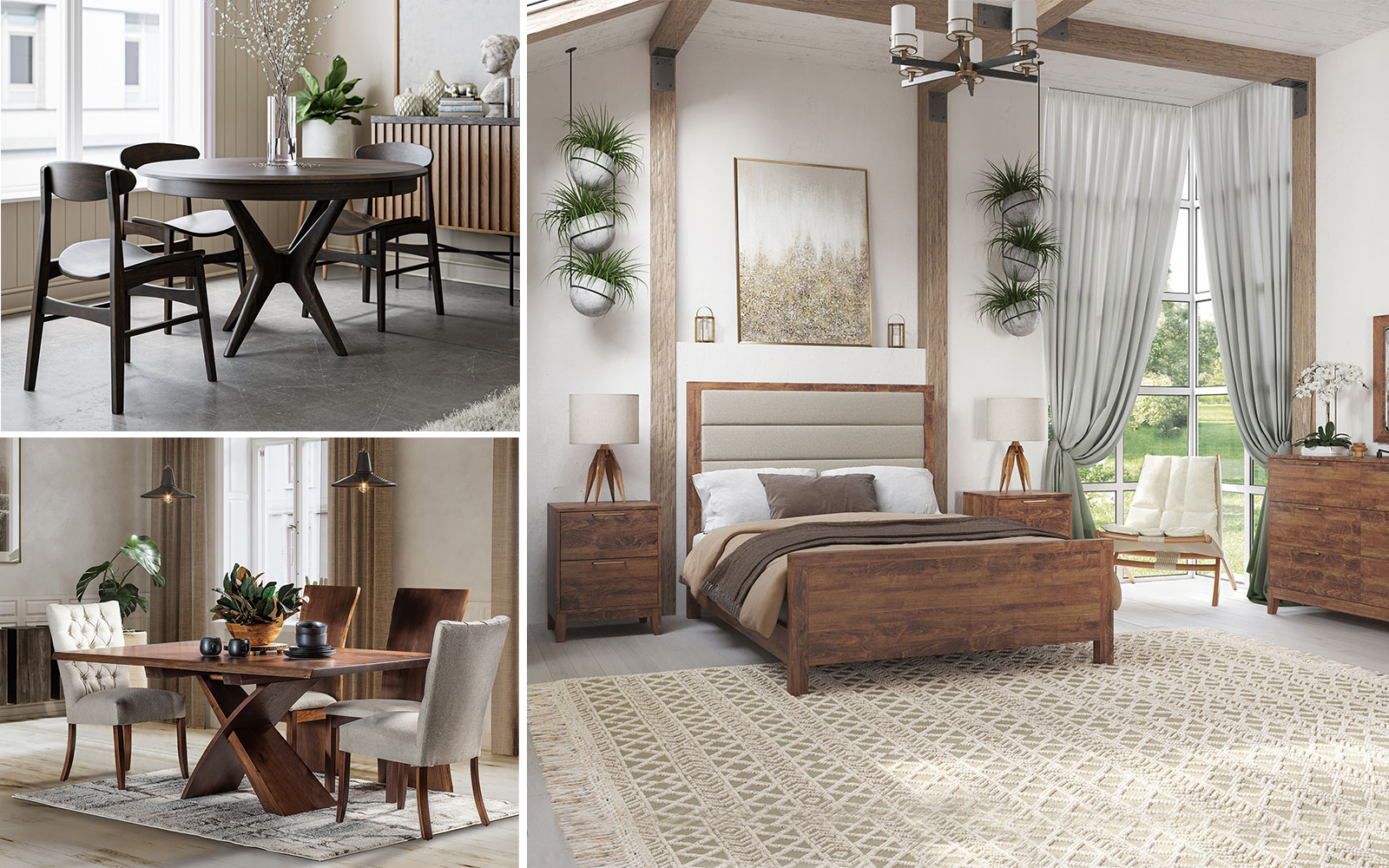
Sleek and Minimalist
- Bold Geometric Shapes
- Strong Straight Lines
- Sweeping Curves
Emerging in the early 1900s and gaining prominence in post-World War II America, Modern furniture style remained influential throughout the 1950s and 1960s.
It blends the functionality and simplicity of Mission design with a bold, confident flair—some even consider Modern style a subset of Mission. Closely tied to the architectural innovations of its time, this style is exemplified by iconic works like Frank Lloyd Wright’s masterpiece, Fallingwater. Amish craftsmen have embraced Modern design to refresh and diversify their collections, and interior designers often select these pieces for high-end projects.
Modern furniture is characterized by bold geometric shapes, strong straight lines, and sweeping curves. This minimalist mindset is highlighted by sleek surfaces and a palette of warm, dark, or neutral tones accented with vibrant pops of color. Unlike Mission style, Modern furniture incorporates a mix of materials such as plastic, vinyl, leather, and chrome-plated steel, reflecting the era’s fascination with new technologies and materials. Substyles within this category include Mid-century Modern, Transitional, Eclectic, Minimalist, Boho-Chic, Scandinavian Minimalism, Casual-Chic, and Contemporary.
Rustic Style:
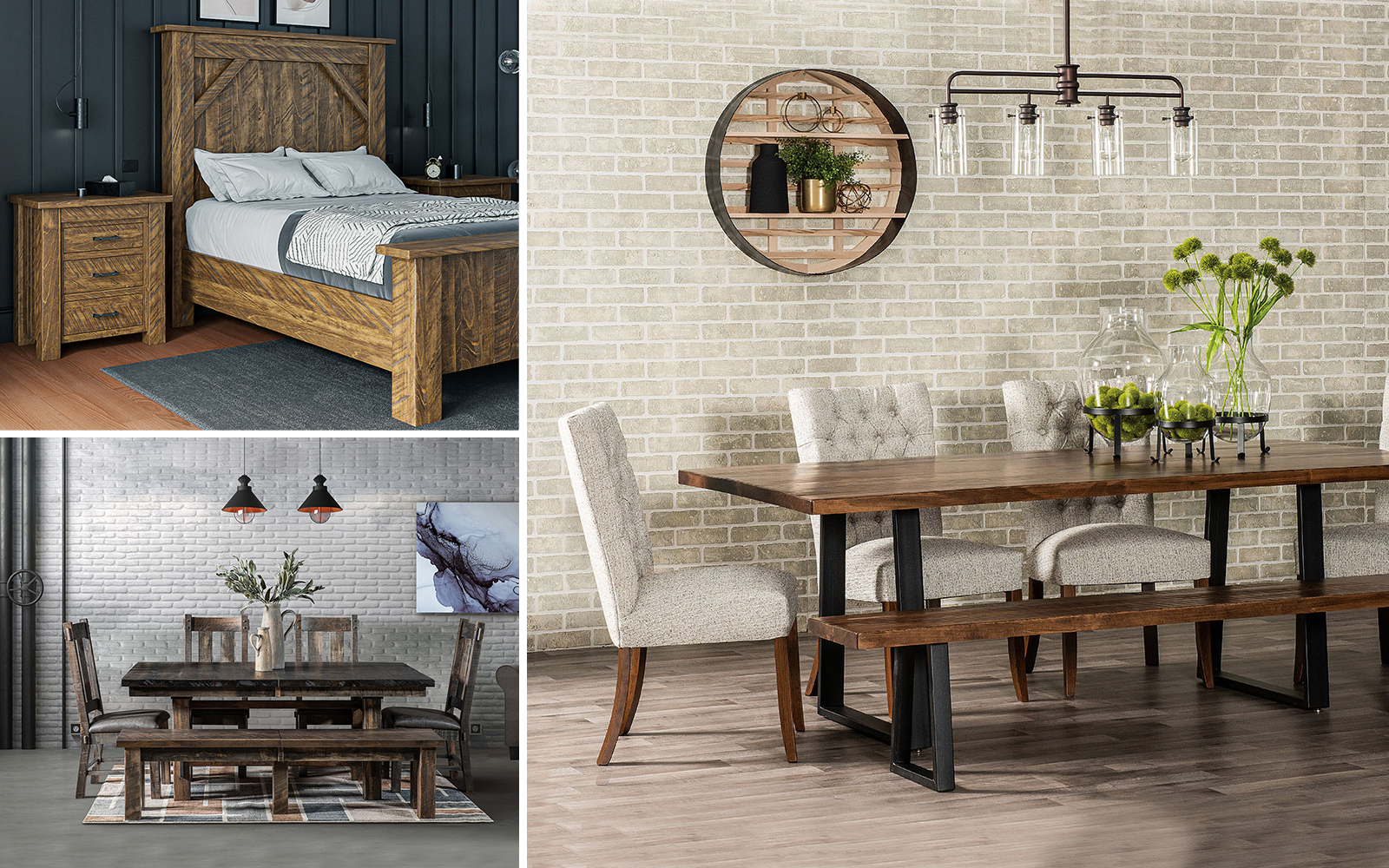
Embracing Natural Beauty
- Distressed and Natural
- Metal Accents
- Blocky Shapes
Embracing the beauty of imperfections, rustic-style furniture celebrates the character that comes with age and use. Rather than covering the imperfections, this style features them as a badge of authenticity.
Featuring darker, neutral hues and textures inspired by the great outdoors, rustic furniture brings a natural warmth into any space. Popularized beyond country cabins in the 2010s—thanks in part to Chip and Joanna Gaines from HGTV’s “Fixer Upper”—the rustic look has become a mainstream design choice. The Amish have excelled in this style by using reclaiming barnwood often over a century old, showcasing the wood’s unique burls and knots.
Even new wood can achieve this warm, lived-in aesthetic through techniques like distressing and hand-planing. Rustic design strikes a balance between the ruggedness of industrial metal accents and the coziness of warm wood, creating an inviting atmosphere. Furniture pieces often feature simple, blocky shapes and natural finishes that are intentionally weathered or distressed. Homes embracing this style typically showcase elements like exposed wood beams, fireplaces, shiplap walls, wide plank flooring, stone or brick accents, and large windows. Adding greenery further enhances the seamless connection between indoor and outdoor spaces. Substyles within rustic design include Industrial and Modern Farmhouse, each offering a unique twist on this timeless aesthetic.
Choosing the Perfect Amish Furniture Style for Your Home
These five distinctive Amish furniture styles showcase the remarkable range of furniture designs that the Amish bring to life. By understanding these styles and their unique characteristics, it will help you be more informed on the showroom floor. So regardless of which Amish furniture style catches their eye, you can be confident that Amish craftsmanship delivers durable, high-quality pieces destined to become cherished family heirlooms for generations to come. So explore the artistry here at Amish Collective , and bring a piece of timeless craftsmanship into your home today.
